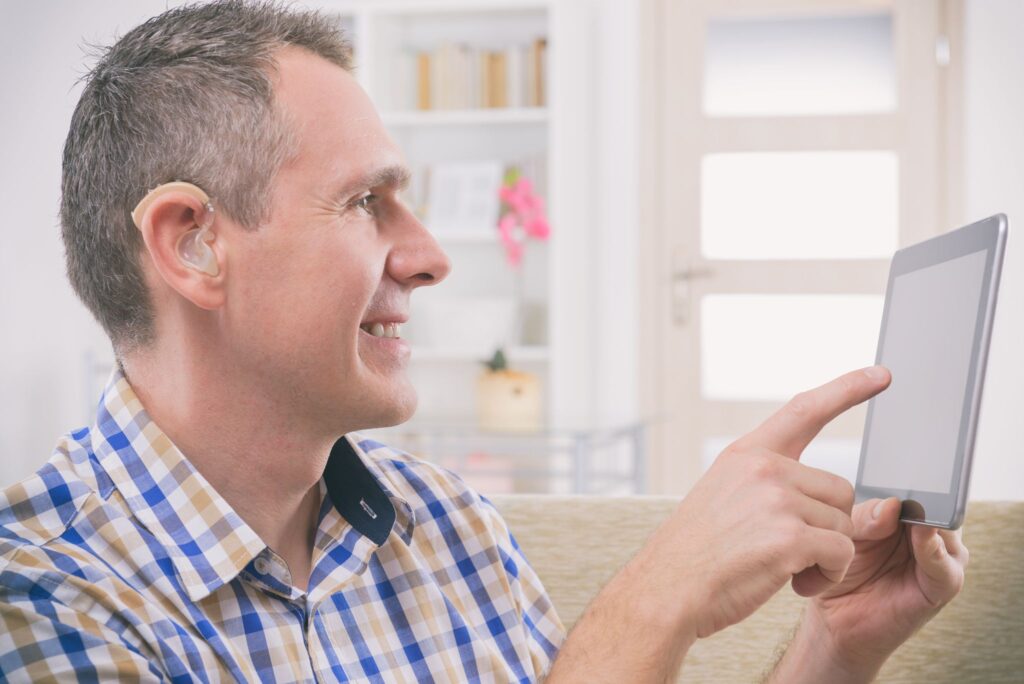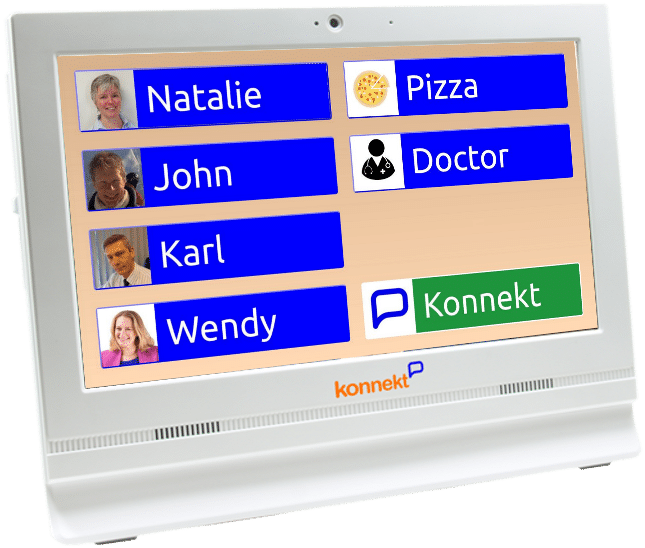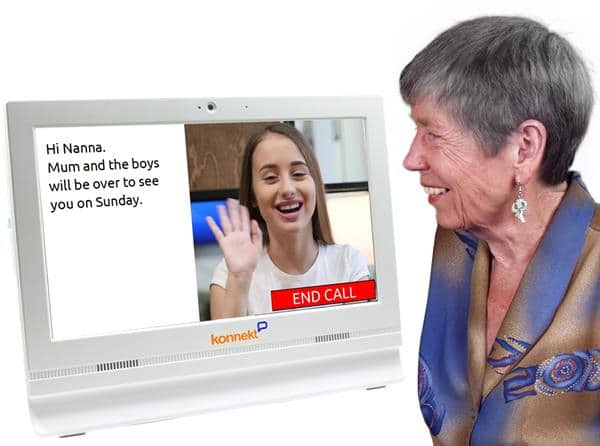Lip Reading – A boon for hearing impaired
Lip reading or Speech reading is the method of using speech sounds to understand what is being said. People can use lip reading along with a variety of cues to understand the context of what is being said.
These cues can include, but are not limited to facial expressions, gestures and sign language. Lip reading can be a helpful tool for anyone, however it is most helpful for those with hearing loss or a hearing impairment.
Lip reading is a great communication tool for those with a hearing impairment as it facilities easy communication with family, friends and loved ones. It can be complemented with sign language such as Auslan.
Reading lips also gives people with hearing loss an opportunity to easily communicate with loved ones face to face and without needing to rely only on written text.

- Use Lip reading or Speech reading to communicate
- Read lips and facial expressions; use sign language or flash cards
- Face-to-face calls shown* to help prevent social isolation and depression
- Facilitates better communication
Why lip reading has improved quality of communication by 45%
Lip reading is a beneficial communication tool for anyone with hearing loss or a hearing impairment. It is also helpful for those that are communicating with someone who has poor hearing.
It facilities face to face communication and ensures that people with poor hearing can communicate with others with ease. Since cues such as facial expressions help with contextual understanding, lip reading is helpful for all conversations.
Face to face communication is more beneficial than regular phone calls and lowers the risk of depression (1), especially in older adults. It is crucial for strengthening mental health and looking after the well being of those we love. Face to face communication also reduces social isolation(2) and loneliness as well as improving overall health and well being.
Proven benefits of lip reading
Studies conducted by University College London have also shown that 30 to 45 percent of conversation can be understood by lip reading. Lipreading improves the overall quality of the conversation and improves communication.
Many people prefer face to face communication over regular telephone conversations as facial expressions provide an emotional element that is missing for those that are unable to hear voice intonations.
Given the many benefits of lip reading and speech reading, most people prefer using a form of communication that facilities this.


Lipreading over the phone
Lipreading makes communication better but it is very hard to do over a regular telephone. A lot can get missed over a phone call. You don’t see the smiles or frowns, head tilts or nods. You also cannot read lips and get a better understanding of what the other person is saying.
Luckily a solution to this problem is using a software like Skype. Skype can be downloaded onto any laptop, computer, tablet or smart phone. Skype lets you call family and friends using Wi-Fi. With Skype, you can make video calls to see loved ones face to face or use voice calls to use it as a regular phone.
However, it can be hard to use Skype. There is a set up involved and you need to ensure you follow all the steps to connect to Skype properly.
One difficulty with using Skype is that not everyone who rings you will want to use video calls. This means that you won’t always be able to read lips during the conversation.
Skype also does not have built in captions. So when you’re talking to someone, it can be hard to read lips and understand every single word.
Luckily, there is a better way to talk to family and friends.
Introducing
Konnekt phone with lip reading and captions
The Konnekt Captioning Phone is a helpful product for those with hearing loss or a hearing impairment. It is suitable for all ages and helps with face to face to communication.
- It has a LARGE screen that makes it easy to see loved ones. The 38cm display ensures that you can easily read lips and see facial expressions for better communication.
- Videophone comes installed with automatic captions that start automatically when people start talking. Since the captions are automatic and do not rely on an operator, your phone calls are completely private!
- Your loved ones can call you using a telephone number or by using Skype. Ringing family and friends is as easy a pressing one button.
- The captioning videophone is extra loud and the volume can be adjusted to suit your needs. The ringing volume is separately adjustable and can be made EXTRA loud. When someone calls, you can hear the ringing from several rooms away – even if you’re a little hard of hearing.


Other benefits include:
Hearing-aid friendly
- If you use a hearing aid, you can plug a hearing-aid loop into the standard 3.5mm audio output socket.
- Hands free for convenience plus handset for privacy and clarity
Customised to your needs
- We can make your Videophone EXTREMELY loud if you have trouble hearing, or softer if you must use it in a room shared with others.
- Customised ringtone, caption text size and contact buttons
- The videophone is ready to be used straight out of the box. Konnekt can customise the phone for you so it’s ready to be used from the minute you receive it.
Tri-modal communications
- Listen: Adjustable volume, from soft to super loud
- Captions: Fast, fully private, context-sensitive error correction
- Read lips: Select full-screen video, or split-screen with captions.
To find out more, contact us
Konnekt captioning phone with lip-reading - It's a video phone and a regular phone, all in one
Talk face-to-face with family, friends and colleagues
- Captions. Fast, private, accurate. Multiple languages*.
- Hands-free. Speak and listen without effort.
- Read lips, facial expressions. Use sign language.
- Large display and easy to use screen
- Huge buttons. Call family and friends with one touch
- Completely customised for your needs
Results of Research and Studies
- Lack of Face-to-Face Contact doubles Incidence of Depression
Study of 11,000 older adults concludes face-to-face contact, 3 times per week, specifically with family / friends, reduces social isolation, halves depression risk. Derived gains endure years later. However, phone conversations, written communication, and contact with others (non family / friends) had no measurable impact.
Dr. Alan Teo Professor Oregon Health and Science University, Face-to-face socializing more powerful than phone calls, emails in guarding against depression in older adults, OHSU Research Paper 2015-10; also published as A. R. Teo et al, Does Mode of Contact with Different Types of Social Relationships Predict Depression in Older Adults?, Journal of the American Geriatrics Society, vol. 63, no. 10, pp. 2014-2022, 2015. - Systolic Blood Pressure was 14.4 mm worse after 4 years between the least and most lonely.
L. C. Hawkley and J. T. Cacioppo, Loneliness Matters: A Theoretical and Empirical Review of Consequences and Mechanisms, Annals of Behavioral Medicine, vol. 40, no. 2, 2010.
